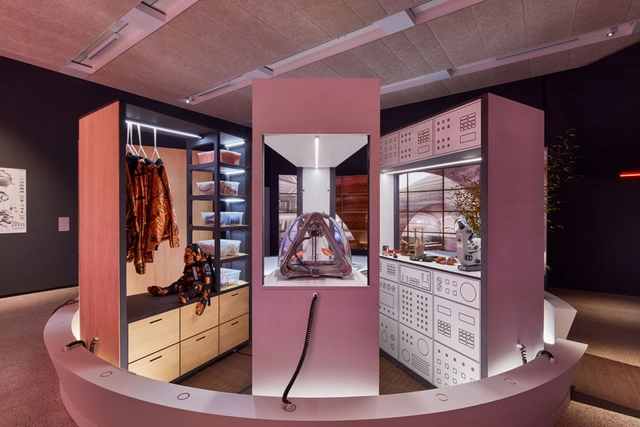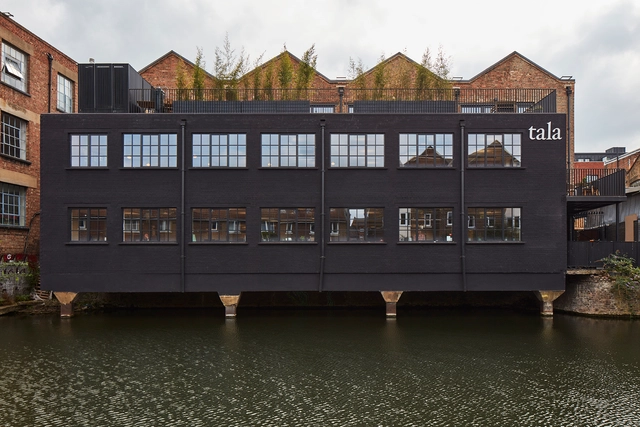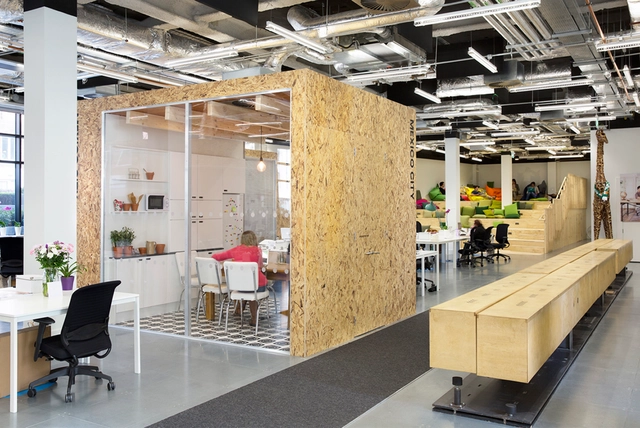
-
Architects: Grafton Architects
- Area: 9400 m²
- Year: 2020
-
Manufacturers: Effisus, Michelmersh
-
Professionals: Turner & Townsend, DES Electrical/CMB Engineering, Fulkers, Chapman - BDSP, AKT II, +1
If you want to make the best of your experience on our site, sign-up.

If you want to make the best of your experience on our site, sign-up.



Mars has been notable for capturing humans' interest, intriguing business moguls such as Elon Musk and Jeff Bezos to go on a "billionaire space race" and settle on the planet. But does humanity have the right to colonize another planet? If so, who does this sky-high ambition serve?


My commitment to pavilions—to the idea of making constructional follies—is connected with needing to develop prototypes and carry out constructional research away from the normal practice of architecture. Without being subject to a client’s brief, the pavilions give me an opportunity to develop and test different methodologies, which is something that has always interested me about teaching. They are investigations into various kinds of context, dealing with urban scenarios and landscapes—they are about making something in space for its own sake, when the guiding idea comes from a reading of place. The pavilions fine tune my engagement with a specific situation, allowing me to see what is essential in terms of an action or construction. I did not set out with the idea of working in series, but as different opportunities came up, the process of designing them became more organic, the language seemed to make sense, and as one thing reinforced another, they took on a life of their own.



Dublin is one of the world’s most beloved cities. The Irish capital welcomes over 5.6 million tourists every year from around the world, seeking out the city’s red brick rows, cobblestone streets, and lush green parklands.
Dublin has good reason for being on any architect’s travel list. Modest Georgian tenements, sensitively altered by local architects, stand alongside major civil and public works by some of the world’s most renowned international firms, while warm art nouveau and art deco cafes sit alongside the sleek, modern headquarters of the world’s largest tech firms.

In this video from CNN Style, London designers Edward Barber and Jay Osgerby discuss Forecast, a wind-powered installation they created in collaboration with V&A Museum for the first London Design Biennale. With the intent to help city residents find their way “at a time of turbulence,” the installation responds to the Biennale's theme "Utopia by Design."

In the mid-1980s, after literature had long been held hostage by postmodernist irony and cynicism, a new wave of authors called for an end to negativity, promoting a "new sincerity" for fiction. Gaining momentum into the 1990s, the movement reached a pinnacle in 1993 when, in his essay E Unibus Pluram: Television and U.S. Fiction, pop-culture seer David Foster Wallace, a proponent of this "new sincerity," made the following call to action: “The next real literary ‘rebels’ in this country might well emerge as some weird bunch of anti-rebels, born oglers who dare somehow to back away from ironic watching, who have the childish gall actually to endorse and instantiate single-entendre principles... These anti-rebels would be outdated, of course, before they even started. Dead on the page. Too sincere. Clearly repressed. Backward, quaint, naive, anachronistic. Maybe that’ll be the point. Maybe that’s why they’ll be the next real rebels. Real rebels, as far as I can see, risk disapproval. The old postmodern insurgents risked the gasp and squeal: shock, disgust, outrage, censorship, accusations of socialism, anarchism, nihilism. Today’s risks are different. The new rebels might be artists willing to risk the yawn, the rolled eyes, the cool smile, the nudged ribs, the parody of gifted ironists, the ‘Oh how banal.'"
Architecture, ever in debt to the styles and ideas of other art forms, could learn a thing or two now from the resuscitation of American fiction at the turn of the millennium. It too is enduring an identity crisis, mired by pessimism and uncertainty - a reality made painfully clear this past January when a New York Times Op-Ed by Steven Bingler and Martin C. Pedersen, How to Rebuild Architecture, divided camps and made the design world fume. In the editorial, the authors spoke vehemently of an architectural profession that has become mired by egos and been disconnected from public needs. Things quickly got ugly, critics wrestled with critics and subsequently the public got involved. What no one seemed to take into account is that this type of hounding is at the core of the problem. In its current landscape the discipline has struggled with its past, been deferential to its present, and wrestled with the uncertainty of its future. In a moment when we have become addicted to despondency, can anyone win?
In discussion with Calvin Tomkins for a 2013 profile in The New Yorker, David Adjaye spoke intensely on the significance of his Sugar Hill Development. “Context,” said Adjaye, “is so important, not to mimic but to become part of the place. I wanted a building that acknowledges its surroundings.” The recently-completed project is the brainchild of Ellen Baxter, leader of Broadway Housing Communities (BHC), a non-profit that has made strides to create innovative housing schemes in Upper Manhattan’s Washington Heights neighborhood. In an era where mixed-used developments are routine, Sugar Hill adds new dimensions to the typology by uniting affordable apartments, an early childhood education center, offices for the BHC, and the Sugar Hill Children’s Museum of Art & Storytelling.
In conjunction with their full building review written by Rob Bevan, The Architectural Review has produced this video which introduces the broader public to the tenants, allowing us to better understand the building’s use, intentions, and the design philosophy.

There has been much debate, speculation and excitement among architectural enthusiasts about who is on the shortlist to design the Barack Obama Presidential Center in Chicago. After spending an afternoon viewing “Making Place: The Architecture of David Adjaye,” now on at the Art Institute of Chicago, I’m more convinced than ever that Adjaye is the right person for the job.


Workplace design has undergone a radical transformation in the last several decades, with approximately seventy percent of today’s modern offices now converted to open plans. However, despite growing concerns over decreases in worker productivity and employee satisfaction, the open office revolution shows no sign of slowing down. The open office model has proliferated without regard for natural differences in workplace culture, leading to disastrous results when employees are forced into an office that works against their own interests. If we are to make offices more effective, we must acknowledge that ultimately, design comes out of adapting individual needs for a specific purpose and at best, can create inviting spaces that reflect a company’s own ethos.


